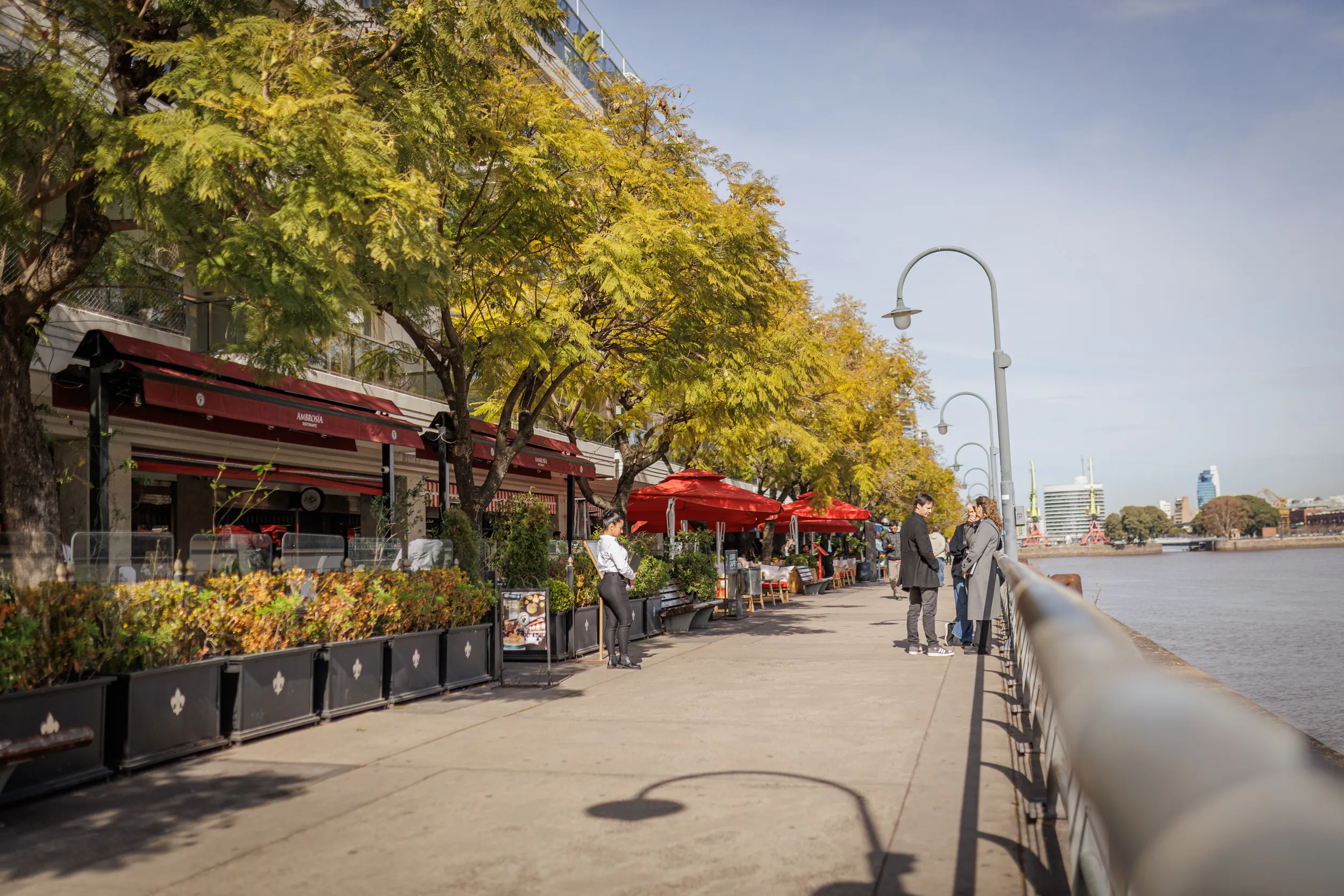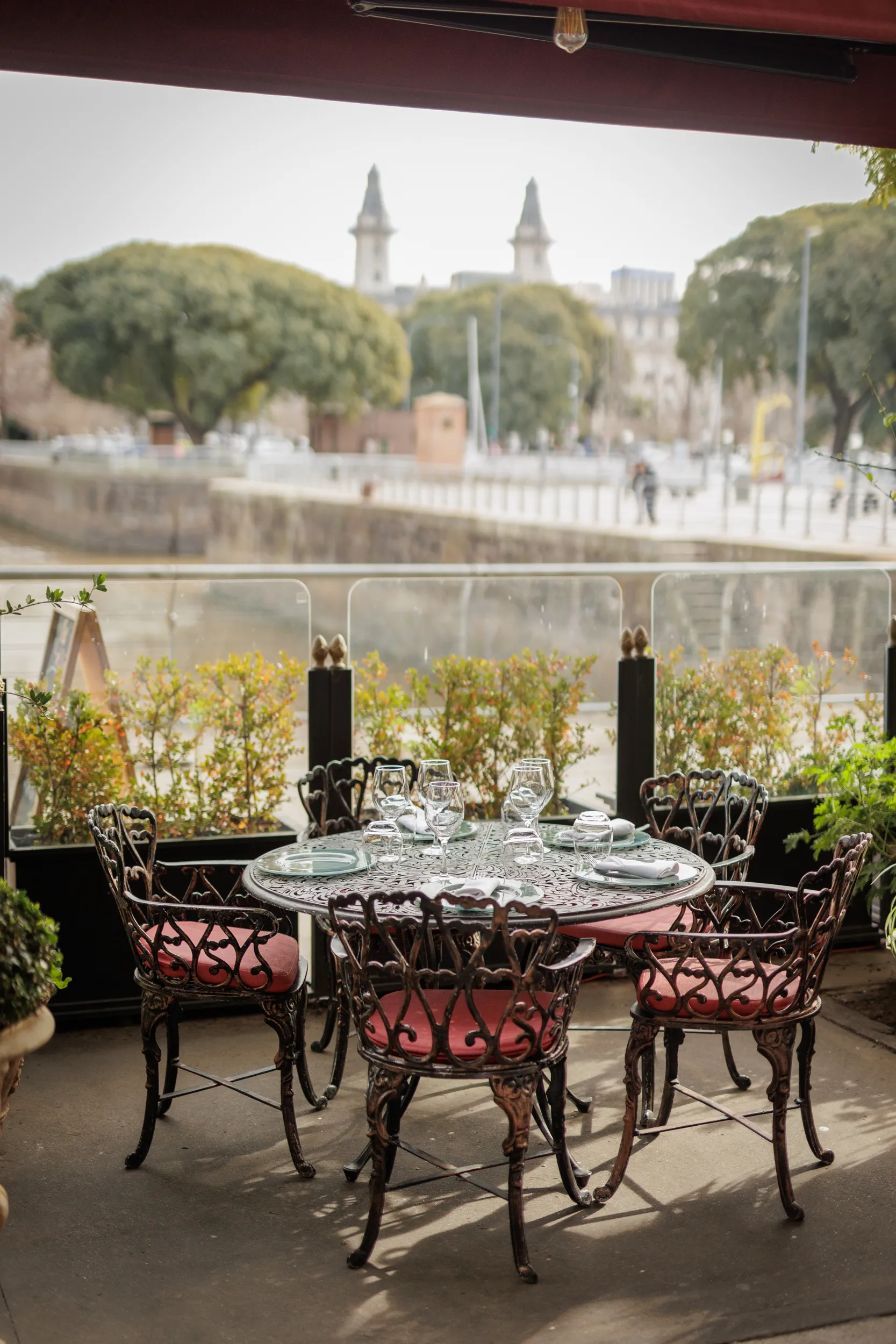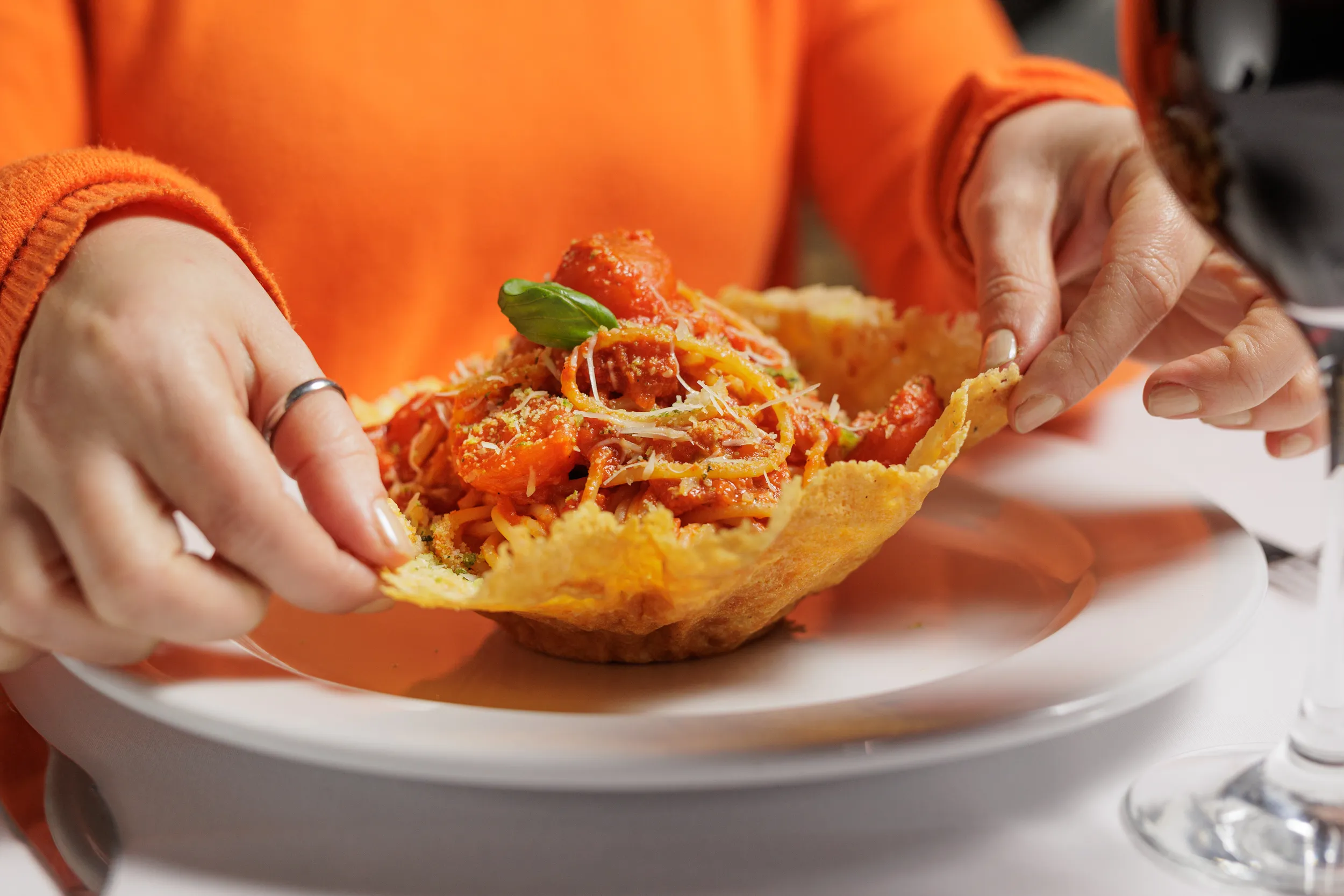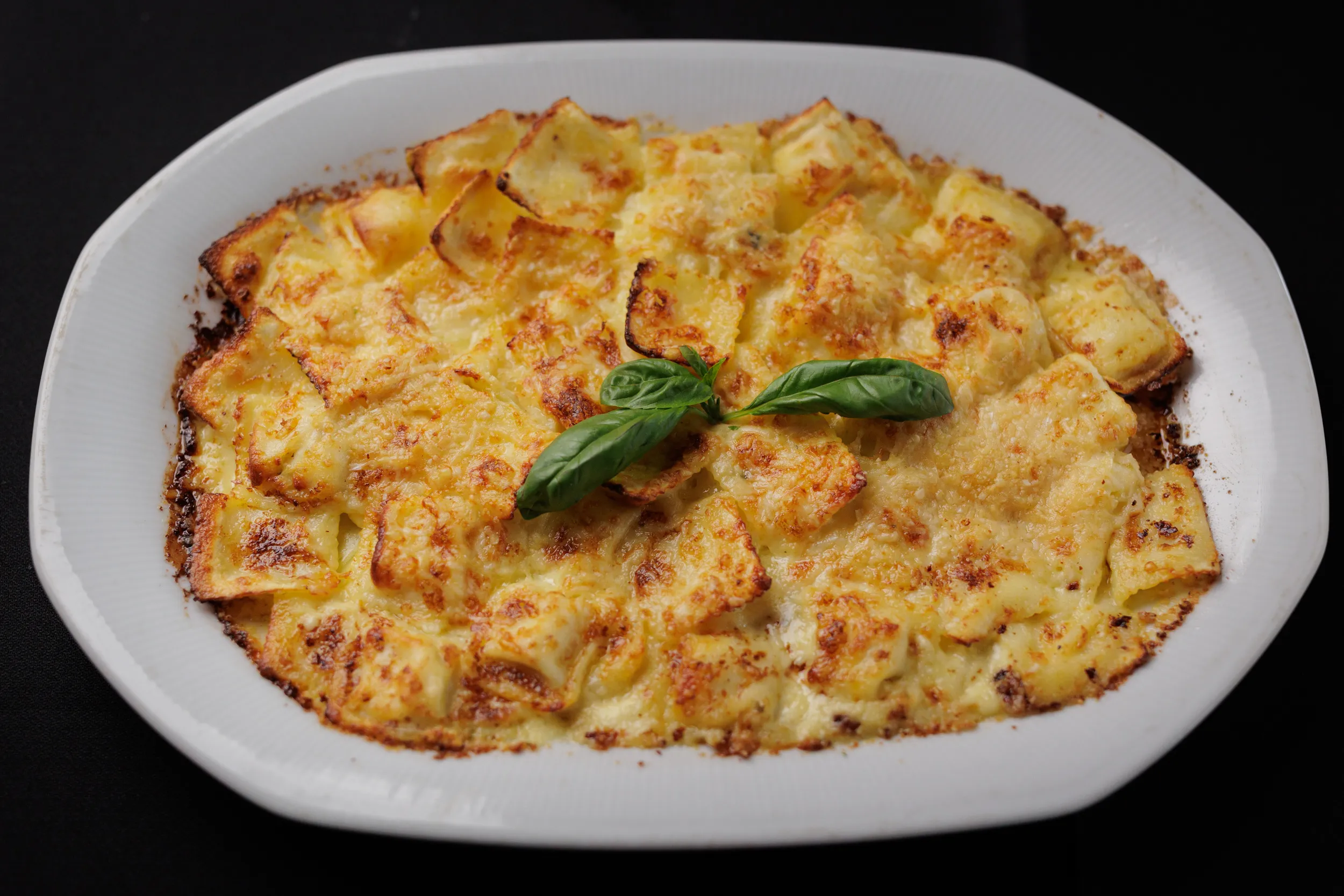In Puerto Madero, right by the river and far from any gastronomic pretension, Ambrosia (Pierina Dealessi 1320) achieved what few have: bringing the flavors of southern Italy to Buenos Aires without copying or staging them. “What gives us identity is that we are Italian. We don’t act it—we are,” says Gino Gentile, who owns the restaurant with his father Saverio. And he doesn’t say it as a slogan, but as someone stating something obvious, almost domestic, because that’s how life goes on behind the scenes at the restaurant.

Ambrosia
The story begins long before the tablecloth and the parmesan. The Gentile family is from Calabria and still travels to southern Italy several times a year. They have restaurants there, cousins who come to Buenos Aires to work at Ambrosia, and a way of inhabiting the space that mirrors any family trattoria: affectionate shouting, big gestures, short no-frills coffee. “We speak Italian in the dining room, we dress like they do there, we cut our hair like they do there… it’s our everyday life,” says Gino, still surprised that people sometimes think “being Italian” is a décor and not an identity.

Ambrosia
“We speak Italian in the dining room, we dress like they do there, we cut our hair like they do there”
A slice of Calabria in Buenos Aires
The project was born, paradoxically, from a real-estate opportunity. In Argentina, the family is dedicated to producing and exporting fruits and vegetables, with stands at the Mercado Central. When they secured a space in Puerto Madero, they thought: if there were no real Italian cafés left, why not open one? “We wanted a place to drink coffee like in Rome: short, strong, no sugar, no sweetener, no drawings on the foam,” says Gino. From there, the evolution into a restaurant where you eat like in Calabria was a natural step.
You may also like: Where to eat the best pasta in Buenos Aires
The choice of Puerto Madero is no coincidence either: it’s emotional territory. That’s where their immigrant grandparents arrived, where the Immigration Museum now stands. “My grandfather slept there for a few days when he first arrived in the country. Our roots are always in the south of the city. That’s why this spot fits us perfectly,” he adds. The name was suggested by Gino’s mother: Ambrosia, the mythical feast of the gods. And that’s how the restaurant works too: like a daily feast—simple but sacred.

Ambrosia
The menu: al dente, or niente
There’s no negotiation here. Pasta is always served al dente, sauces are made with Italian tomatoes, and the flour also comes from Italy because, as Gino explains, “they’re the ones that allow a perfect cook—anything else is just a simulation.”
The dish that sums up everything Ambrosia wants to be is the simplest and the most theatrical: pasta served inside a parmesan basket. Al dente spaghetti, real Italian tomatoes, cherry tomatoes, and a cheese shell you can devour entirely once you’re done eating. It never fails—a direct hit to the carbohydrate heart.

Ambrosia
But the hidden gem on the menu is another: the original carbonara, the real Roman one. No pancetta, no cream, no inventions: guanciale instead of pancetta, Italian pecorino (from sheep), properly al dente pasta, and nothing else. “People know carbonara, but not ours. This is how the Romans make it—the original. It’s amazing,” says Gino, proud of the purism.
“People know carbonara, but not ours. This is how the Romans make it—the original”
And that’s not all. The menu also features a dish that has become a house signature: Rivera ravioli, created especially for Ambrosia by the historic Bologna factory in La Boca. These ravioli come with a pizza-dough top that reveals a hidden filling when cut into—an homage to the riverbank and, at the same time, a bridge between two worlds: Italy and Buenos Aires.
The spirit: eating like at a nonna’s house
If there’s one thing Gino is clear about, it’s the experience he wants diners to have. “We want people to leave certain that they ate something as close as possible to the cooking of a grandmother from southern Italy,” he says. And the phrase isn’t a metaphor: the Gentile family grew up surrounded by nonnas who cooked slowly, well, and without shortcuts. At Ambrosia, everything tries to replicate that emotional rhythm.

Ambrosia
What’s next: a destination, not a trend
Unlike many Puerto Madero restaurants that live off hype, Ambrosia aims for something else: to become a destination. “I’m not interested in having lines. I don’t want it to be a trendy place where there’s never a table. I want everyone to be able to try what we make,” Gino explains.
The plan is simple: keep offering food with reasonable prices and honest execution, without lowering quality. “Cheap ends up being expensive. I want to give people a real product at a fair price. And I hope I can keep it going for many more years,” he says.
“I want to give people a real product at a fair price”
Between the river view, the aroma of Italian sauce, and the affectionate Calabrian shouting, Ambrosia doesn’t just honor its roots—it keeps them alive. It’s Italy without costume, without imitation, without staging. Italy as it is: loud, warm, exaggerated, delicious.
And at the end of the day, that’s what you take with you: the feeling of having eaten at a nonna’s house who, for some magical reason, cooks right in the middle of Puerto Madero.
Where: Pierina Dealessi 1320, Puerto Madero. Reservations, here.


Dining and Cooking